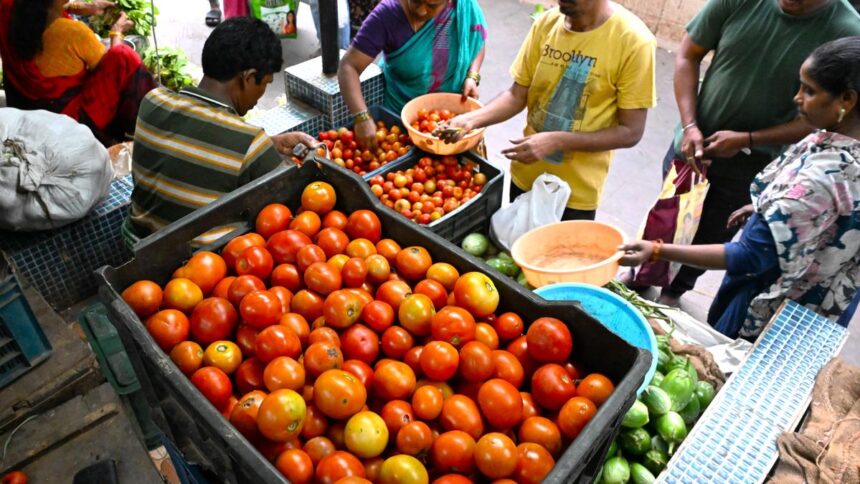
Since January, while food prices have subsided, non-food components of inflation have been drifting up but not enough to elevate overall CPI
| Photo Credit:
V RAJU
After remaining stubbornly high until the end of 2024, domestic inflation seems to be edging down. The latest Consumer Price Index (CPI) release showed retail inflation sliding 27 basis points sequentially to 3.34 per cent in March 2025. The biggest contributor to the decline was the food component which plummeted to 2.69 per cent, a 40-month low, from a peak of 10.87 per cent in October 2024. With the benign March print, CPI inflation has averaged 4.6 per cent in FY25, undershooting the Reserve Bank of India’s projection of 4.8 per cent.
Vegetable prices, which were the wild card factor last year, have been contracting since February, deflating by 7 per cent in March. This was triggered by a rebound in horticultural output after a good monsoon in FY25 and improved TOP (tomato-onion-potato) supplies. With the prices of eggs (minus 3.1 per cent) and pulses (minus 2.7 per cent) in retreat and muted inflation of 1-3 per cent in dairy products and meat, the pressure on lower-income households who bore the brunt of the food price spiral last year, is likely to have eased. This can be positive for non-discretionary consumption. Edible oils (17 per cent) continued to be the only outlier among food items in March 2025. The government can quell this, by rolling back the 20 per cent basic customs duty on vegetable oils imposed last year.
Since January, while food prices have subsided, non-food components of inflation have been drifting up but not enough to elevate overall CPI. Inflation in housing (3.03 per cent), clothing (2.62 per cent), health (4.26 per cent) and transport saw minor increases, but fuel inflation saw a spike to 1.5 per cent from a negative 1.33 per cent in February 2025. There are many factors pointing to a benign inflation outlook. One, though vegetable prices are prone to a seasonal summer spike, a high base effect will quell their impact on CPI this year. With the India Meteorological Department’s (IMD’s) early-stage forecast predicting a second consecutive year of above-normal monsoon rains this year, the improvement in supplies should sustain. Two, energy prices carry significant weight in CPI and have a knock-on effect across goods and services. Benchmark Brent crude has fallen below $65 a barrel and is expected to remain subdued. Though the Centre has so far pocketed savings from the decline, it may eventually have to be passed on to consumers.
Three, while the impact of Trump’s tariffs on inflation is hard to gauge at this juncture, the disruption to trade raises the prospects of a global slowdown. This is a negative for commodity prices. Should US barriers to Chinese imports remain high, the likelihood of Chinese goods flooding alternative markets such as India also cannot be ruled out. Overall, the risks to inflation seem to be mainly on the downside. There may be no reason for the Monetary Policy Committee to regret its recent pivot which prioritises growth over inflation control.
Published on April 17, 2025










